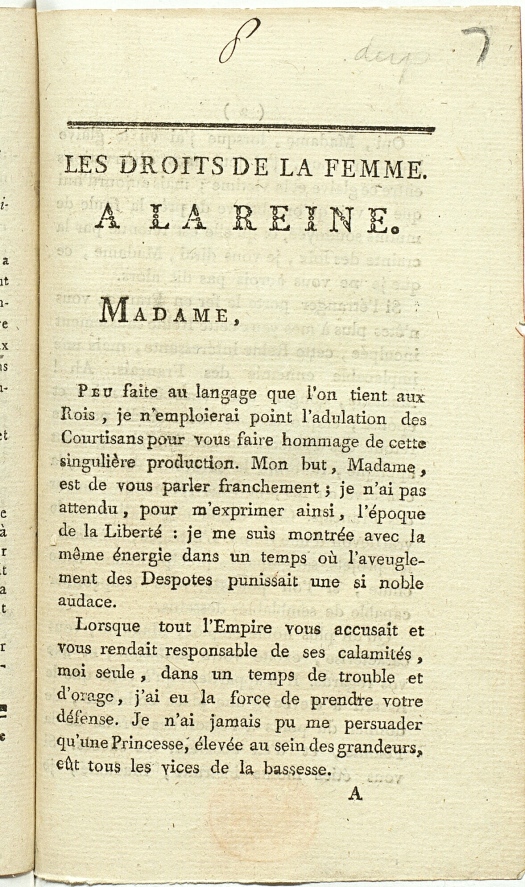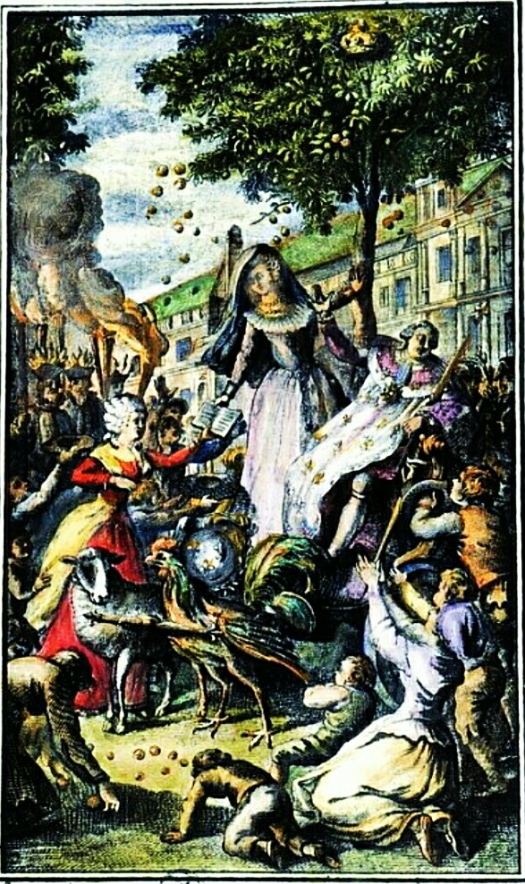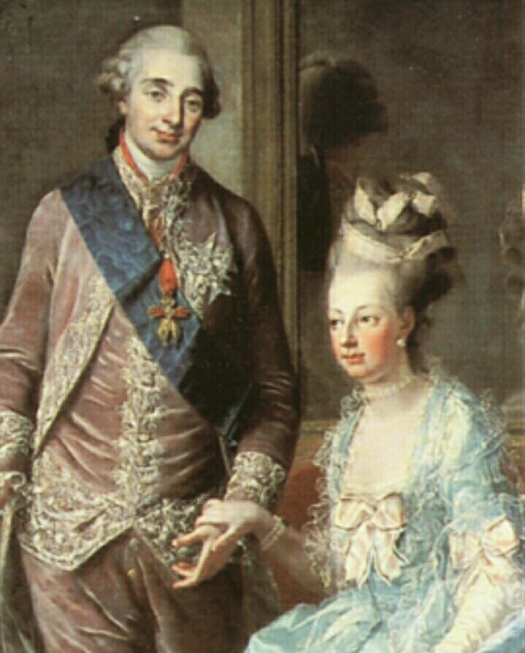The Declaration of the Rights of Woman and the Female Citizen was published in Paris on September 5, 1791, during the early years of the French Revolution by Olympe de Gouges, a French activist, feminist, and playwright.

The Declaration was intended as a response to the Declaration of the Rights of Man and of the Citizen, adopted by the National Constituent Assembly In 1789.
In the brief pamphlet, usually referred to simply as the Declaration of the Rights of Woman, de Gouges uses humour, satire, and irony to draw readers in before turning to her serious assertion that women are the equals of men and deserving of the same rights as men.
She begins with a provocative question, “Man, are you capable of being fair? A woman is asking: at least you will allow her that right. Tell me? What gave you the sovereign right to oppress my sex?”

For her efforts, de Gouges was arrested on a charge of treason and sent to the guillotine where she was beheaded during the Jacobin Reign of Terror in 1793.
The Declaration of the Rights of Woman is dedicated to King Louis XVI’s wife Queen Marie Antoinette. Ironically, Marie Antoinette herself was beheaded on the same spot two weeks before de Gouges was, but for very different reasons.

The dedication is somewhat tongue-in-cheek.
“When the entire Empire accused you of being responsible for its calamities I alone, at a time of dilemmas and storms, had the courage to defend you. I could never believe that a princess raised in the bosom of greatness could stoop to such base viciousness…
Madame, let a nobler occupation characterise you, excite your ambition and attract your attention. Only one placed by chance in an eminent position can promote the Rights of Woman and hasten its success. If you were less enlightened, Madame, I might fear that your personal interests would outweigh those of your sex…
This revolution will only be complete when all women are aware of their deplorable fate and of the rights that they have lost in society. Madame, support such a great cause; defend this unfortunate sex and soon, you will have one half of the Kingdom on your side and at least a third of the other half.”

There had been protests and petitions before demanding women’s rights under the Revolution, but it’s leaders were never interested in female equality
The Declaration of the Rights of Woman was published in English in 1792. Mary Wollstonecraft’s A Vindication of the Rights of Woman, written that year, was a response to and an expansion on de Gouges’ work.
In the United States, the Declaration of the Rights of Woman was used as a template by Elizabeth Cady Stanton and the authors of Declaration of Sentiments at the Seneca Falls Convention in 1848.

